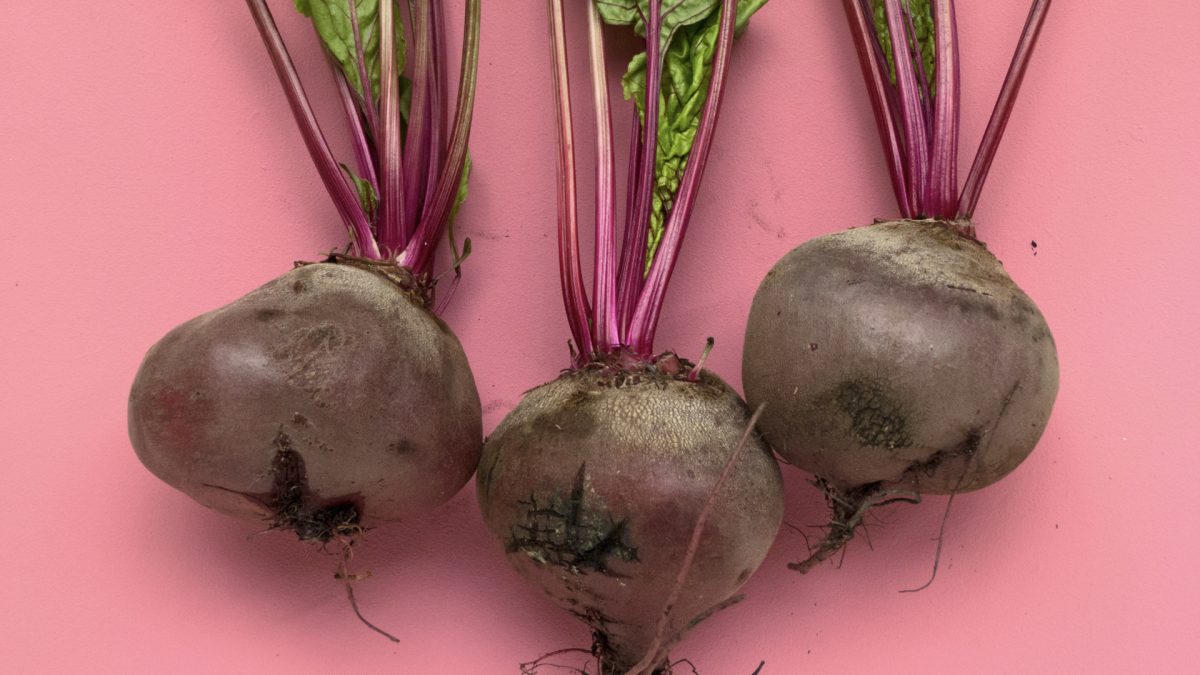What is the optimal timing and dose of nitrate-containing vegetables? In terms of timing for improving athletic performance, since every person is different, two to three hours before a competition is about as specific as we can get.
What about the best dose? How much borscht do we have to have for breakfast? To date, most studies have used a narrow range of doses so it’s not clear if it’s a matter of more is better or if there’s a ceiling, or threshold amount. A group of researchers decided to find out. They set up folks on an exercise bike and had them cycle furiously until they dropped. The subjects made it about eight minutes after drinking a placebo. After one shot of beetroot juice, which is about a quarter of a cup, they may or may not have gained a few seconds. However, drinking a half-cup gave them about a full extra minute. Drinking even more didn’t seem to offer any additional benefit.
That half-cup or so of beet juice corresponds to 8 “units” of nitrate. So, 4 units didn’t significantly work, and 16 did no better than 8. Thus, 8 units appear to be the sweet spot for improving athletic performance. What about for lowering blood pressure? Again, we see the same thing. Blood pressure may have been helped a little by 4 units, but 8 worked better and about equally well as 16. A 10-point drop in blood pressure, which may not sound like a lot, but that may translate into dropping heart attack risk by 25% and stroke risk by 35%.
But, beet juice is perishable and hard to find. What about V8 juice, which has both beet and spinach juice? It must not have much, though, because you’d have to drink 19 quarts a day to hit the target. That why I have a cooking video on making my own!
Straight beet juice is nitrate-packed, but it’s a processed food. How many actual beets or green leafy vegetables would one have to eat to reach the target of eight units? Well, the British Heart Foundation did the work for you and produced a useful chart that you can see in my “Veg-Table” Dietary Nitrate Scoring Method video at the 2:10 minute mark. They took into account both nitrate concentration and serving size for a range of foods, and arranged all of the foods into three groups: a high nitrate group that’s worth two nitrate units per serving, a medium group that’s worth about a half unit per serving, and a low nitrate group that’s worth one-tenth of a unit per serving. The serving sizes they analyzed are pretty small, though, less than three ounces. (Remember, we’re trying to get up to eight units a day.) So, a typical 15-ounce can of beets would nail the daily eight-unit target, as would a really big salad of greens, both of which are in the high nitrate group. Most people only get about a unit a day, and even vegetarians need to double their vegetable intake, and those eating organic may have to eat even more.
Organic produce may have more vitamin C, iron, magnesium, and phosphorus, but it tends to have fewer nitrates since synthetic nitrogen fertilizers are banned by law from organic agriculture. Eating 15% more organic veggies to get the same nitrate intake is easy, but, for beets, the spread can be larger. On the other hand, organic beets may have more of certain phytonutrients, like the red pigment for which beets are known, which may explain why the organic beet extracts had significantly higher anti-cancer effects in vitro compared to conventional beets.
For more information on why one would want to boost their nitrate consumption, check out these videos: Whole Beets vs. Juice for Improving Athletic Performance, Oxygenating Blood with Nitrate-Rich Vegetables, and Slowing Our Metabolism with Nitrate-Rich Vegetables.
If you really want to take a really deep dive into the background of this fascinating area, see my original 16-part series:
- Doping with Beet Juice
- Priming the Proton Pump
- Don’t Use Antiseptic Mouthwash
- Out of the Lab & Onto the Track
- Asparagus Pee
- Pretty in Pee-nk
- Vegetables Rate by Nitrate
- Is Bacon Good or Is Spinach Bad?
- When Nitrites Go Bad
- Hearts Shouldn’t Skip a Beet
- Bacon and Botulism
- Are Nitrates Pollutants or Nutrients?
- Prevention Is Better Than Cured Meat
- Carcinogens in the Smell of Frying Bacon
- Vitamin C-Enriched Bacon
- So Should We Drink Beet Juice or Not?
In health,
Michael Greger, M.D.
PS: If you haven’t yet, you can subscribe to my free videos here and watch my live, year-in-review presentations:
- 2012: Uprooting the Leading Causes of Death
- 2013: More Than an Apple a Day
- 2014: From Table to Able: Combating Disabling Diseases with Food
- 2015: Food as Medicine: Preventing and Treating the Most Dreaded Diseases with Diet
- 2016: How Not To Die: The Role of Diet in Preventing, Arresting, and Reversing Our Top 15 Killers
